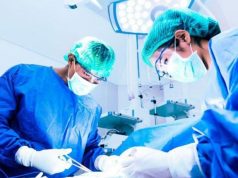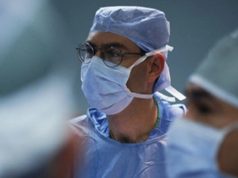The 2018 Annual Meeting of the American Academy of Orthopaedic Surgeons
The annual meeting of the American Academy of Orthopaedic Surgeons was held from March 6 to 10 in New Orleans and attracted approximately 30,000 participants from around the world. The conference highlighted recent advances in the diagnosis and management of musculoskeletal conditions, with presentations focusing on joint fractures, osteoarthritis, and other musculoskeletal injuries, as well as factors impacting joint replacement procedure outcomes.
One of two studies presented by Asif Ilyas, M.D., of the Rothman Institute and Sidney Kimmel Medical College at Thomas Jefferson University in Philadelphia, highlighted that one of the causes of the opioid crisis may be attributable to inadvertent over-prescribing and over-consumption of opioids by patients after surgeries, resulting in unintended opioid dependence.
“The first study showed that direct and deliberate counseling of patients preoperatively on the risks, benefits, and safe usage of opioids resulted in a two-third reduction of opioids consumed by patients postoperatively,” Ilyas said. “This study demonstrates the power of counseling, education, and communication on postoperative opioid use.”
In the second study, the researchers found that patients postoperatively used the same amounts of Tylenol, Motrin, or oxycodone, and had similar pain experiences when blinded to which of the three medications they were receiving.
“This finding validates the use of non-opioids for postoperative pain and challenges the notion that all surgeries require opioids for postoperative pain management,” Ilyas said. “Both findings are practical and tangible interventions that all clinicians can consider.”
Charles A. Popkin, M.D., of the Columbia University Medical Center and New York-Presbyterian Hospital in New York City, and colleagues found that parental influence on their child’s sports experience can be substantial, including both direct and indirect pressures exerted from parents on children to specialize in sports.
The investigators found that 57 percent of parents surveyed wanted their children to play collegiate or professional sports, and 50 percent of the parents encouraged their children to specialize in a sport. Parents who hired personal trainers or specialized coaches were much more likely to believe that their child held collegiate or professional aspirations. Eighty percent of parents who hired personal trainers for their children believed that their child aspired to play professionally or collegiately (compared to 51 percent of parents who did not hire specialized trainers; P = 0.01).
“Culturally, we have to look at the ramifications of parents setting unrealistic expectations with regards to achieving athletic success. If we are defining success as the attainment of a college scholarship or professional contract there are going to be a lot of unhappy parents, and more importantly, unhappy children,” Popkin said. “Children pay attention to what their parents say and do. Parental encouragement and behavior strongly modify the child’s sports experience and expectations. Most sport parents transport the kids to and from practice, games, and tournaments. They purchase equipment and in certain cases arrange for personal trainers or private coaching for additional instruction. When parents are investing this much time and this many resources there can be a lot of indirect pressure to specialize in a sport.”
Robert H. Brophy, M.D., of the Washington University School of Medicine in St. Louis, and colleagues evaluated soccer players who had previously reconstructed anterior cruciate ligament (ACL) tears, suffered a new injury to the reconstructed ACL, and then had a revision ACL reconstruction. The investigators evaluated how these patients fared after their revision surgery.
“We found that two-thirds of patients were able to go back to playing soccer after the revision surgery; however, that number dropped off over time to fewer than one in five still playing soccer six years after surgery. This was similar in men and women. When we asked for the primary reason patients stopped playing soccer, over 70 percent said it was because of their injured knee. We also found that 20 percent of females needed additional knee surgery, while only 5 percent of men required additional surgery,” Brophy said. “One interesting finding was that none of the patients with bone-tendon-bone autografts tore their ACL again, compared to 10 percent of patients who had revision ACL reconstruction with other grafts.”
However, this finding was a trend but not statistically significant, with a P value of 0.06. Yet, according to Brophy, it does suggest further study is warranted to determine if bone-tendon-bone autografts are the best graft choice for this population.
“I believe this study is helpful for guiding expectations. Compared to soccer players undergoing a primary, or initial, ACL reconstruction, soccer players undergoing a revision were less likely to get back to soccer, stopped playing soccer sooner even if they initially returned to the sport, and were more likely to re-injure their ACL after surgery,” Brophy said.
AAOS: Participation in Sports Safe After Total Knee Arthroplasty
TUESDAY, March 6, 2018 (HealthDay News) — Participation in sports, including sports with high activity scores, seems safe after total knee arthroplasty (TKA), according to research presented at the annual meeting of the American Academy of Orthopaedic Surgeons, held from March 6 to 10 in New Orleans.
AAOS: Stem Cell Tx for Knee OA Costs About $5,000 Per Injection
TUESDAY, March 6, 2018 (HealthDay News) — Despite low-level evidence, stem cell therapy for knee osteoarthritis is expanding, with centers reporting high clinical efficacy and direct-to-consumer mean cost exceeding $5,000 for each therapy, according to a study presented at the annual meeting of the American Academy of Orthopaedic Surgeons, held from March 6 to 10 in New Orleans.
AAOS: Football Is Leading Cause of Cervical Injury in U.S.
TUESDAY, March 6, 2018 (HealthDay News) — Men have increased incidence of cervical sprains and fractures associated with sports, with football the most common cause of sprains and cycling the most common cause of fractures in males, according to research presented at the annual meeting of the American Academy of Orthopaedic Surgeons, held from March 6 to 10 in New Orleans.
Copyright © 2018 HealthDay. All rights reserved.







